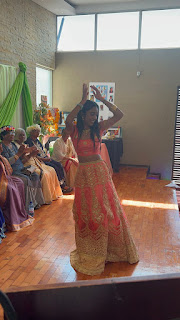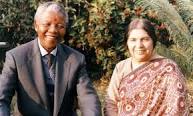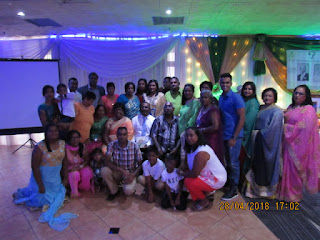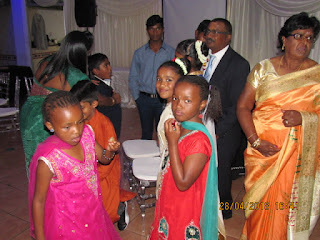PROFESSOR JERRY COOVADIA - INTERVIEW IN 2008
PROFESSOR HOOSEN JERRY COOVADIA
(OCT 6 2023)
(Prof Coovadia with his comrades, Thumba Pillay and Dr Farouk Meer at a meeting of the Active Citizens Movement. Dr Meer passed away recently.)
At a time when former activists and comrades are paying tribute to freedom and medical struggle stalwart, Professor Jerry Coovadia, who passed away at the age of 83 on Wednesday, Oct 4 (2023), I would like to re-publish a printed version of a radio interview that I had conducted with the committed and progressive leader in 2008.
This is the introduction:
Sometime during 2008 when I started a radio programme, Our Rich History, to broadcast the lives of struggle heroes and heroines and community leaders, I had the privilege of interviewing Professor Jerry Coovadia. He was one of the prominent officials and activists of anti-apartheid organisations such as the Natal Indian Congress, the United Democratic Front, and the progressive National Medical and Dental Association (NAMDA).
Professor Coovadia was at this time based at the University of Natal Medical School. I had made arrangements to interview him after a number of former activists began questioning the deviation by some of the new ANC rulers from the true values and principles for which they had struggled for and paid a heavy price.
Professor Coovadia had at this time also withdrawn from political involvement and instead concentrated his life in the research and fight against the Aids pandemic.
This is the printed version of my radio feature:
“At that time, our view of life was that the political struggle was just one component and that one of the critical forces through which I could make a contribution and my colleagues was in my profession.”
(Prof Coovadia seen in the back row near Siva Naidoo and Dr Farouk Meer, who passed away rcently. He attended a meeting of the ACM.)
Born into a business family who came to
But Coovadia who came from a large family of four brothers and four sisters was just as socially aware and committed like other young people who experienced various forms of racial discrimination at that time.
After he completed his high school at Sastri College, he wanted to enroll at the University of the Cape Town Medical School.
But he was turned down because he was of Indian-origin.
His parents then made arrangements for him to study at the
It was here that his political consciousness gained momentum.
“I studied in
After his return home in the mid-1960s his parents wanted him to practice as a private medical doctor. He obtained a job at a medical practice run by three Indian doctors.
But this only lasted a few months. His social consciousness would not allow him to become a money hungry doctor.
He left the practice to work at the King Edward V111 Hospital in 1967. He has been at King Edward and the neighbouring
Here Professor Coovadia came face to face with the socio-economic suffering of the people and this soon drove him into the political arena.
“As soon as I had come back and become a qualified padetrician it coincided with the re-establishment of the Natal Indian Congress by Mewa Ramgobin and that provided a channel for the expression of my political views.”
After the successful transition of political power and the attainment of democracy in 1994, Professor Coovadia quickly moved out of active party politics when he found that the thirst for political dominance was more important than promoting the interests of the poor and marginalised.
“The focus now became on getting power within political organisations. It became absolutely clear that there was a very, very strong manouvre of getting into positions of power regardless of what your particular contributions were. And I felt particularly unsuited for that type of role.”
Professor Coovadia began to concentrate on the Aids pandemic because it was becoming one of the biggest threats to the country’s new found democracy.
“This country and indeed the world hasn’t seen anything like what the Aids pandemic has done. It has wreaked devastation and it is a tragedy of extreme proportions that the moment we get independence and freedom that we sought, we are confronted with the worst pandemic in human history. And it so happens that the epidemic is more seriously felt in our land among the people than anywhere else in the world.”
He has been involved in more than 40 research publications on Aids and has been recognized for his untiring efforts by universities in the
He was also bestowed with several awards, including the Order of the Star of
Despite being fully occupied in the fight against Aids, Professor Coovadia still keeps an eye on political developments. He is not too enthusiastic about certain issues.
“I guess many of us are disappointed that the policies we have chosen as a Government and opted for a model which most people would describe as fitting in with the Washington Consensus is not a policy which I understand is directed to the upliftment of the majority of the people of this country who are poor.”
Professor Coovadia believes in telling it like it is as this is the only way that





























































































